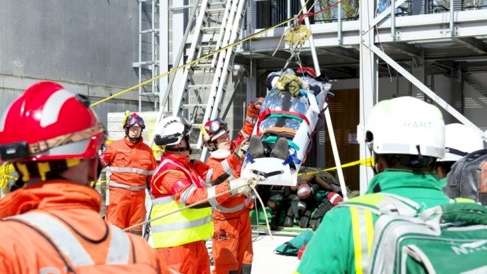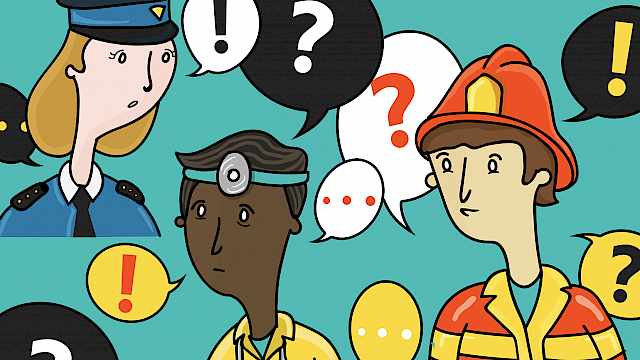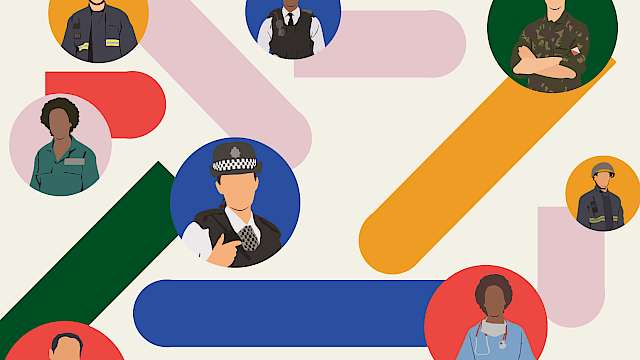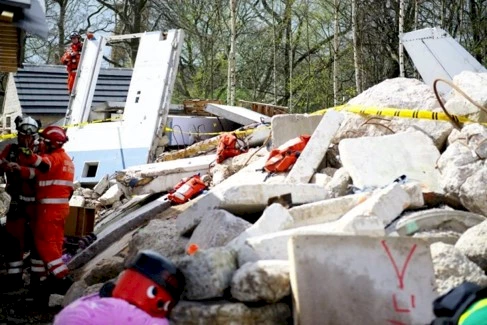Imagine you are a commander in the Fire and Rescue Service. Three men have opened fire with automatic weapons in a busy city centre train station. Armed Police are pursuing the attackers in the underground tunnel network while hundreds of civilians lie bleeding and dying on the station concourse. Specialist trained Fire and Rescue and Ambulance responders are operating inside the station, saving lives and extricating casualties, but they are becoming stretched beyond capacity. Additional non-specialist trained responders have arrived at the scene and are volunteering to assist inside the station, however, they have no ballistic protective gear or training.
What do you do? Commit responders despite the risk that the terrorists might return to the station concourse and open further fire? Or withhold responders despite the risk that more civilians might bleed out and die as a result?
There is no right or wrong answer to this dilemma. It is a matter of choosing the ‘least-worst’ consequence and although this scenario might seem extreme, it provides an example of the types of decisions that commanders must be prepared to make. What’s more, as the Paris shootings in November 2015 and Brussels bombings in March 2016 remind us, there is a real risk of such events occurring. Commanders must be confident and able to make ‘least-worst’ choices under conditions of extreme time pressure, ambiguity, and risk.
Joint Decision Model
Training in decision making can help commanders to take action under such extremes by structuring the decision process. To help commanders, and as part of a wider programme to improve interoperability and inter-agency working between the UK’s emergency services, the UK government recently rolled out the ‘Joint Decision Model’ (JDM).
The JDM is intended to help commanders “bring together the available information, reconcile objectives and make effective decisions – together”. It is founded on two collective goals – to ‘save life’ and ‘reduce harm’ – and encourages commanders from the different response agencies to make decisions collectively.
Yet despite the intentions behind the JDM, the practical usefulness of it as a decision-making tool has not been tested. For example, could the dilemma outlined above be resolved with agreement from all three response agencies? Or might role-specific priorities interfere with collective aims, leading to disagreements and delayed response? In the above scenario, the Police commander might want a cordoned area so that her firearms team can operate without fearing risk to additional emergency responders, whereas the Ambulance commander may want to do whatever it takes to access and treat casualties.
Not fit for purpose
With colleagues at Liverpool University, I ran a project to gain a better understanding of how emergency response teams operate in the real world and explore the core challenges to command decision making.
Our research coincided with the national roll-out of the JDM, offering a unique opportunity to compare our results in the context of procedural change.
Our findings suggest that the JDM in its current format is not fit for purpose. An alternative model that focuses on improving goal clarity, clearly defining roles and drawing on agency-specific expertise is more appropriate.
Our three main findings are:
- The ‘save life’ goal created confusion in multi-team settings. All the agencies work towards this goal, but what it means in terms of behaviour was specific to the priorities of each individual agency, for example, whether they sought to locate and neutralise the threat (most important to police) or treat patients (ambulance agency priority).
- The core goals of the JDM – to ‘save life’ and ‘reduce harm’ – are psychologically incompatible. ‘Save life’ guides thinking on how to take action to make a positive impact on the situation, whereas ‘reduce harm’ guides thinking on how to avoid creating a negative impact on the situation. This delays decisions as commanders try to achieve two contrasting goals.
- There are several key challenges within incident decision-making, which can be themed into two categories: 'endogenous uncertainties', relating to the features of the incident itself, for example managing the public inside and outside the incident as well as potential media intrusion; and 'exogenous uncertainties', relating to the features of the organisation/team attending the incident, such as miscommunication between teams or misunderstanding each other’s responsibilities.
We also make three practical recommendations based on our research:
- The JDM should be replaced by a decision-making model that focuses on collaborative rather than collective decision making, whereby agencies are made aware of and incorporate one another’s goals within a decentralised network.
- Training to enhance the anticipation of ‘least-worst’ decision making could help commanders better cope with difficult decision trade-offs.
- Training that focuses explicitly on teamwork (as opposed to technical skills) will increase the resilience of the multi-team network.
Our future research will develop and test, with the emergency services, an alternative model to the JDM that facilitates inter-agency collaboration at high-stakes, high-consequence, multi-team emergencies.
Read more
- The full report behind this research is available here: Download . It was funded by the EPSRC Risk Institute and the University of Liverpool Department of Psychology in collaboration with Merseyside Fire and Rescue, North West Ambulance Service and Merseyside Police.
Copyright Information
As part of CREST’s commitment to open access research, this text is available under a Creative Commons BY-NC-SA 4.0 licence. Please refer to our Copyright page for full details.






